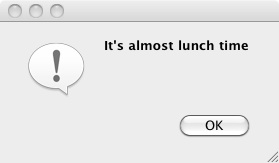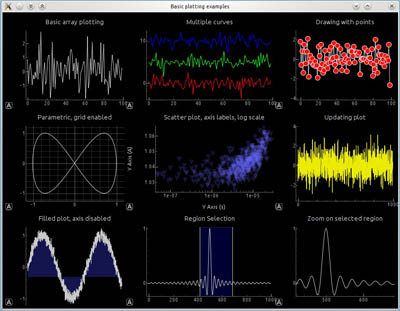PySide: Difference between revisions
Renatorivo (talk | contribs) (Marked this version for translation) |
(PySide in FreeCAD with Qt5. Normally, the PySide module provides support for Qt4, while PySide2 provides support for Qt5, however, in FreeCAD, there is no need to use PySide2 directly, as a special PySide module is included to handle Qt5.) |
||
| Line 4: | Line 4: | ||
{{docnav|Pivy|FeaturePython Objects}} |
{{docnav|Pivy|FeaturePython Objects}} |
||
== |
==Introduction== <!--T:28--> |
||
<!--T:29--> |
<!--T:29--> |
||
[http://en.wikipedia.org/wiki/PySide PySide] is a Python binding of the cross-platform GUI toolkit Qt. FreeCAD uses PySide for all GUI |
[http://en.wikipedia.org/wiki/PySide PySide] is a Python binding of the cross-platform graphic user interface (GUI) toolkit Qt. FreeCAD uses PySide for all GUI purposes inside of Python. PySide is an alternative to the PyQt binding which was previously used by FreeCAD. PySide has a more permissible licence. See [http://qt-project.org/wiki/Differences_Between_PySide_and_PyQt Differences Between PySide and PyQt] for more information on the differences. |
||
== PySide in FreeCAD with Qt5 == |
|||
FreeCAD was developed to be used with Python 2 and Qt4. As both of these two libraries became obsolete, FreeCAD transitioned to Python 3 and Qt5. In most cases this transition was done without needing to break backwards compatibility. |
|||
Normally, the {{incode|PySide}} module provides support for Qt4, while {{incode|PySide2}} provides support for Qt5, however, in FreeCAD, there is no need to use {{incode|PySide2}} directly, as a special {{incode|PySide}} module is included to handle Qt5. |
|||
This {{incode|PySide}} module is located in the {{incode|Ext/}} directory of an installation of FreeCAD compiled for Qt5. |
|||
</translate> |
|||
{{Code|code= |
|||
/usr/share/freecad/Ext/PySide |
|||
}} |
|||
<translate> |
|||
This module just imports the necessary classes from {{incode|PySide2}}, but places them in the {{incode|PySide}} namespace. This means that in most cases the same code can be used with both Qt4 and Qt5, as long as it imports {{incode|PySide}}. |
|||
</translate> |
|||
{{Code|code= |
|||
PySide2.QtCore -> PySide.QtCore |
|||
PySide2.QtGui -> PySide.QtGui |
|||
PySide2.QtSvg -> PySide.QtSvg |
|||
PySide2.QtUiTools -> PySide.QtUiTools |
|||
}} |
|||
<translate> |
|||
The only unusual aspect is that the {{incode|PySide2.QtWidgets}} classes are placed in the {{incode|PySide.QtGui}} namespace. |
|||
</translate> |
|||
{{Code|code= |
|||
PySide2.QtWidgets.QCheckBox -> PySide.QtGui.QCheckBox |
|||
}} |
|||
<translate> |
|||
== PySide information == |
|||
<!--T:30--> |
<!--T:30--> |
||
Revision as of 19:30, 2 February 2020
Introduction
PySide is a Python binding of the cross-platform graphic user interface (GUI) toolkit Qt. FreeCAD uses PySide for all GUI purposes inside of Python. PySide is an alternative to the PyQt binding which was previously used by FreeCAD. PySide has a more permissible licence. See Differences Between PySide and PyQt for more information on the differences.
PySide in FreeCAD with Qt5
FreeCAD was developed to be used with Python 2 and Qt4. As both of these two libraries became obsolete, FreeCAD transitioned to Python 3 and Qt5. In most cases this transition was done without needing to break backwards compatibility.
Normally, the PySide module provides support for Qt4, while PySide2 provides support for Qt5, however, in FreeCAD, there is no need to use PySide2 directly, as a special PySide module is included to handle Qt5.
This PySide module is located in the Ext/ directory of an installation of FreeCAD compiled for Qt5.
/usr/share/freecad/Ext/PySide
This module just imports the necessary classes from PySide2, but places them in the PySide namespace. This means that in most cases the same code can be used with both Qt4 and Qt5, as long as it imports PySide.
PySide2.QtCore -> PySide.QtCore
PySide2.QtGui -> PySide.QtGui
PySide2.QtSvg -> PySide.QtSvg
PySide2.QtUiTools -> PySide.QtUiTools
The only unusual aspect is that the PySide2.QtWidgets classes are placed in the PySide.QtGui namespace.
PySide2.QtWidgets.QCheckBox -> PySide.QtGui.QCheckBox
PySide information
Users of FreeCAD often achieve everything using the built-in interface. But for users who want to customise their operations then the Python interface exists which is documented in the Python Scripting Tutorial. The Python interface for FreeCAD had great flexibility and power. For its user interaction Python with FreeCAD uses PySide, which is what is documented on this page.
Python offers the 'print' statement which gives the code:
print 'Hello World'
With Python's print statement you have only limited control of the appearance and behaviour. PySide supplies the missing control and also handles environments (such as the FreeCAD macro file environment) where the built-in facilities of Python are not enough.
PySide's abilities range from:
to:
Familiarize yourself with some real-world examples of PySide
- PySide Beginner Examples (Hello World, announcements, enter text, enter number)
- PySide Intermediate Examples (window sizing, hiding widgets, popup menus, mouse position, mouse events)
- PySide Advanced Examples (widgets etc.)
They divide the subject matter into 3 parts, differentiated by level of exposure to PySide, Python and the FreeCAD internals. The first page has overview and background material giving a description of PySide and how it is put together while the second and third pages are mostly code examples at different levels.
The intention is that the associated pages will provide simple Python code to run PySide so that the user working on a problem can easily copy the code, paste it into their own work, adapt it as necessary and return to their problem solving with FreeCAD. Hopefully they don't have to go chasing off across the internet looking for answers to PySide questions. At the same time this page is not intended to replace the various comprehensive PySide tutorials and reference sites available on the web.
- Getting started
- Installation: Download, Windows, Linux, Mac, Additional components, Docker, AppImage, Ubuntu Snap
- Basics: About FreeCAD, Interface, Mouse navigation, Selection methods, Object name, Preferences, Workbenches, Document structure, Properties, Help FreeCAD, Donate
- Help: Tutorials, Video tutorials
- Workbenches: Std Base, Arch, Assembly, CAM, Draft, FEM, Inspection, Mesh, OpenSCAD, Part, PartDesign, Points, Reverse Engineering, Robot, Sketcher, Spreadsheet, Start, Surface, TechDraw, Test Framework, Web
- Hubs: User hub, Power users hub, Developer hub

